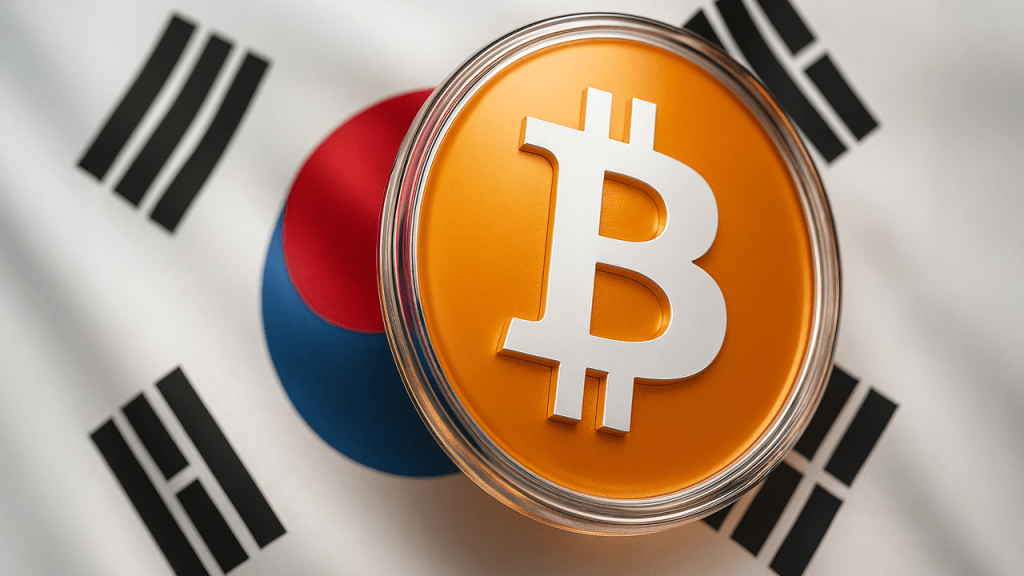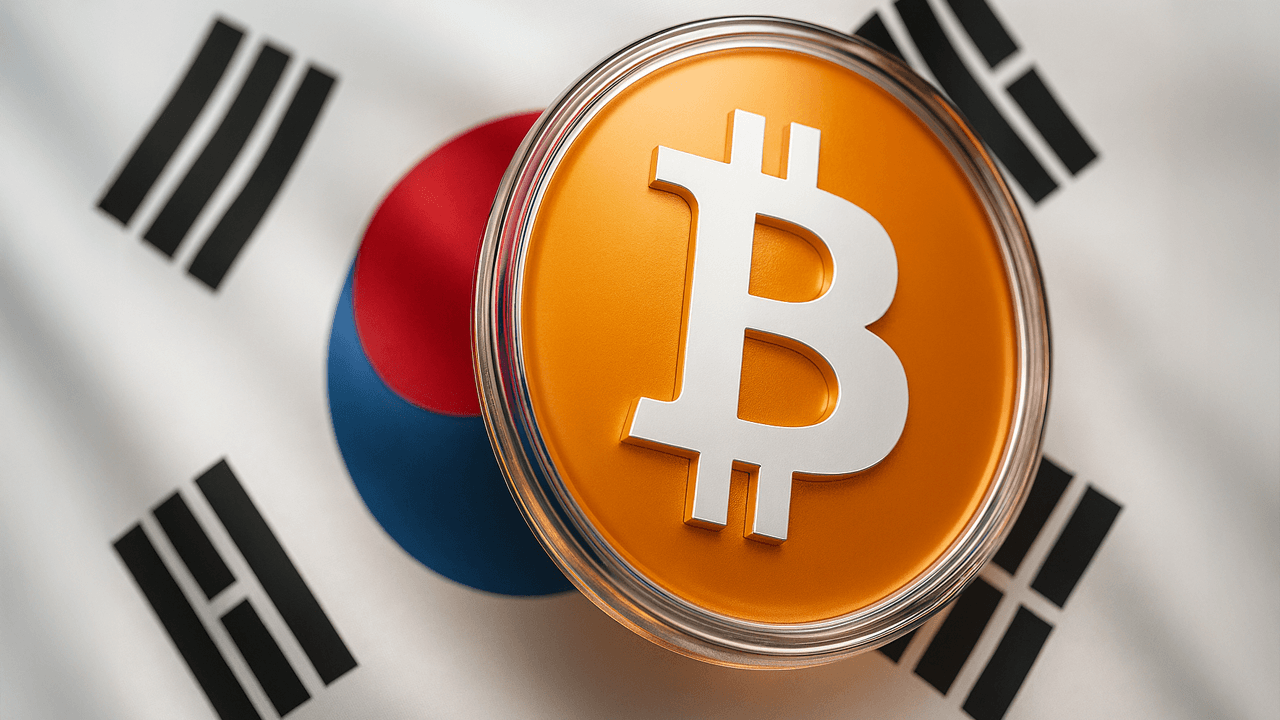
The Curious Case of the Kimchi Premium’s Retreat: A Deep Dive into South Korea’s Bitcoin Market in 2025
Introduction: Beyond the Spicy Speculation
The cryptocurrency market in South Korea has long been a subject of fascination, particularly due to the phenomenon known as the “Kimchi Premium.” This term refers to the persistent higher price of Bitcoin and other cryptocurrencies on South Korean exchanges compared to global averages. For years, this premium was a defining characteristic of the South Korean market, driven by intense local demand, regulatory constraints, and a unique cultural fascination with digital assets. However, recent reports indicate a significant shift: Bitcoin is now trading at a discount in South Korea, a phenomenon unseen in recent memory. This reversal demands a closer examination to understand the underlying factors and potential implications for the broader cryptocurrency landscape.
The Anatomy of the Kimchi Premium: Understanding the Historical Context
To fully grasp the significance of the current discount, it is essential to understand the historical context of the Kimchi Premium. Several key factors contributed to its consistent presence:
High Demand and Cultural Fascination
South Korea has long been a hotbed for cryptocurrency adoption. The country’s tech-savvy population, coupled with a penchant for speculative investments, drove intense demand for Bitcoin and other digital assets. This demand was further fueled by a strong “fear of missing out” (FOMO) mentality, which often gripped the South Korean market, exacerbating price differences.
Regulatory Arbitrage
Stricter regulations on capital outflows made it difficult for South Koreans to purchase cryptocurrencies on international exchanges. This limited arbitrage opportunities, allowing local prices to inflate. The regulatory landscape in South Korea has been notoriously strict, with authorities imposing stringent measures to curb speculative trading and prevent capital flight.
Market Sentiment and Information Asymmetry
A strong “fear of missing out” (FOMO) mentality often gripped the South Korean market, further exacerbating price differences. Additionally, limited access to global market information and analysis could lead to localized price bubbles. This information asymmetry contributed to the unique market dynamics that characterized the South Korean cryptocurrency market.
Historical Price Differences
The Kimchi Premium was not a static phenomenon; it fluctuated over time, sometimes reaching as high as 30% above global averages. This premium became a source of both fascination and concern, highlighting the peculiarities of the South Korean cryptocurrency market.
The Inversion: Unpacking the Discount
The recent emergence of a discount, where Bitcoin trades lower in South Korea compared to global averages, marks a significant departure from this established trend. Reports indicate a discount of around 2%, with some sources pointing to it being the deepest discount witnessed since 2025. Several potential factors could be driving this inversion:
Regulatory Shifts
Changes in South Korean cryptocurrency regulations, such as easing restrictions on capital flows or increased scrutiny of local exchanges, could be impacting the market. Increased regulation might stifle local demand or encourage users to seek better prices on international exchanges. The South Korean government has been known to implement sudden regulatory changes, which can have a profound impact on market dynamics.
Maturing Market
As the cryptocurrency market matures globally, the informational asymmetry that fueled the Kimchi Premium may be diminishing. South Korean investors are likely becoming more sophisticated and better informed about global market dynamics. This increased sophistication could lead to a more rational pricing mechanism, reducing the likelihood of localized price bubbles.
Global Economic Factors
Broader economic trends, such as fluctuations in the South Korean Won or shifts in global risk appetite, could be influencing the demand for Bitcoin in South Korea. Economic conditions play a crucial role in shaping investor sentiment and market behavior. For instance, a strengthening of the South Korean Won could make Bitcoin more expensive for local investors, potentially reducing demand.
Decreased Local Demand
A decline in local demand for Bitcoin, possibly due to increased competition from other investment opportunities or a cooling of speculative fervor, could be contributing to the discount. This cooling could be triggered by negative news events, regulatory actions, or simply a shift in investor sentiment. The South Korean market has historically been highly sensitive to news and regulatory developments.
Arbitrage Opportunities (Ironically)
While historically difficult, improved (though still potentially restricted) access to international markets may allow some arbitrage activity, albeit in reverse. Traders could be buying Bitcoin at lower prices in South Korea and selling it on international exchanges, driving down the local price. However, navigating the regulatory landscape and managing the risks associated with cross-border transactions remains a challenge.
Analyzing the Numbers: A Deeper Dive into the Data
To truly understand the significance of this shift, we need to analyze the available data. Reports indicate Bitcoin trading between $117,502 and $118,781 over a recent 24-hour period, while other sources show figures around $105,116. The price difference may be attributed to when the information was gathered and from which exchange the prices were pulled. Comparing these figures to global averages provides a concrete measure of the discount.
Conversion Rates and Trading Volumes
The conversion rate of Bitcoin to South Korean Won (KRW) is approximately ₩164,645,961 per Bitcoin. Analyzing trading volumes on major South Korean exchanges like Upbit and Bithumb alongside these price figures can provide valuable insights into the intensity of buying and selling pressure. A significant drop in trading volume, coupled with the discount, would further reinforce the notion of decreased local demand.
Bitcoin Dominance
Tracking the dominance of Bitcoin relative to other cryptocurrencies (altcoins) in the South Korean market can reveal whether the discount is specific to Bitcoin or a broader trend affecting the entire cryptocurrency market. A decline in Bitcoin’s dominance could indicate a shift in investor preferences towards altcoins or a general decrease in risk appetite. This shift could have significant implications for the overall market structure and dynamics.
Implications and Potential Consequences
The emergence of a Bitcoin discount in South Korea has several important implications:
Erosion of Market Uniqueness
The Kimchi Premium was a defining feature of the South Korean cryptocurrency market, setting it apart from global trends. Its disappearance suggests a greater integration with the global market and a reduced ability for local factors to drive independent price movements. This could lead to a more homogenized cryptocurrency market, where local peculiarities have less influence on global prices.
Reduced Profitability for Local Exchanges
South Korean cryptocurrency exchanges benefited significantly from the Kimchi Premium, charging higher fees and generating substantial profits. The discount could put pressure on their profitability and force them to adapt their business models. This could lead to increased competition, innovation, and potentially a more efficient market structure.
Increased Arbitrage Opportunities (In Theory)
While regulatory hurdles still exist, the discount could attract arbitrageurs looking to profit from the price difference. However, navigating the regulatory landscape and managing the risks associated with cross-border transactions remains a challenge. This could lead to a more dynamic and efficient market, but it also poses regulatory and operational challenges.
Shift in Investor Sentiment
The discount could be a sign of changing investor sentiment in South Korea, with a potential move away from speculative investments towards more conservative assets. This shift could have broader implications for the South Korean economy and financial markets, as investors reallocate their portfolios in response to changing market conditions.
Global Market Impact
Although South Korea is a significant player in the cryptocurrency market, its impact on global prices is limited. However, a sustained discount could signal a broader cooling of enthusiasm for Bitcoin and potentially influence prices in other markets. This could have implications for the global cryptocurrency market, as investor sentiment and market dynamics are interconnected.
Looking Ahead: The Future of Cryptocurrency Trading in South Korea
The future of cryptocurrency trading in South Korea remains uncertain. Several factors will shape its trajectory:
Regulatory Developments
Continued regulatory evolution will play a crucial role in shaping the market’s structure and dynamics. Further easing of capital controls could lead to greater integration with global markets, while stricter regulations could stifle innovation and drive activity underground. The South Korean government’s approach to cryptocurrency regulation will be a key determinant of the market’s future.
Technological Advancements
Innovations in blockchain technology, such as decentralized exchanges (DEXs) and cross-chain interoperability, could reduce reliance on centralized exchanges and facilitate greater price equalization across different markets. These technological advancements could lead to a more efficient and decentralized market structure, reducing the influence of local factors on prices.
Global Economic Conditions
Broader economic trends, such as inflation, interest rates, and geopolitical instability, will continue to influence investor sentiment and demand for cryptocurrencies. Economic conditions play a crucial role in shaping market dynamics, and their impact on the South Korean cryptocurrency market cannot be overlooked.
Adoption of Central Bank Digital Currencies (CBDCs)
The potential introduction of a South Korean CBDC could disrupt the cryptocurrency market, offering a government-backed alternative to Bitcoin and other digital assets. This could lead to a shift in investor preferences and market dynamics, as CBDCs gain traction and acceptance.
The Return of the Premium?
It is entirely possible the Kimchi Premium could return. Market sentiment is fickle, and if demand spikes again for any number of reasons, the premium could resurface. The South Korean market has a history of volatility and sudden shifts in sentiment, making it difficult to predict with certainty.
Conclusion: A New Chapter for the Kimchi Premium
The shift from a consistent Kimchi Premium to a Bitcoin discount in South Korea marks a significant turning point in the evolution of its cryptocurrency market. While the exact causes are complex and multifaceted, it is clear that regulatory changes, maturing market dynamics, and global economic factors are all playing a role. This new landscape presents both challenges and opportunities for South Korean exchanges, investors, and the broader cryptocurrency community. Whether this discount is a temporary anomaly or a sign of a more profound shift remains to be seen. One thing is certain: the curious case of the Kimchi Premium’s retreat warrants close observation as it could provide valuable insights into the future of cryptocurrency trading in a rapidly evolving global landscape. It seems the spice, for now, has faded.





